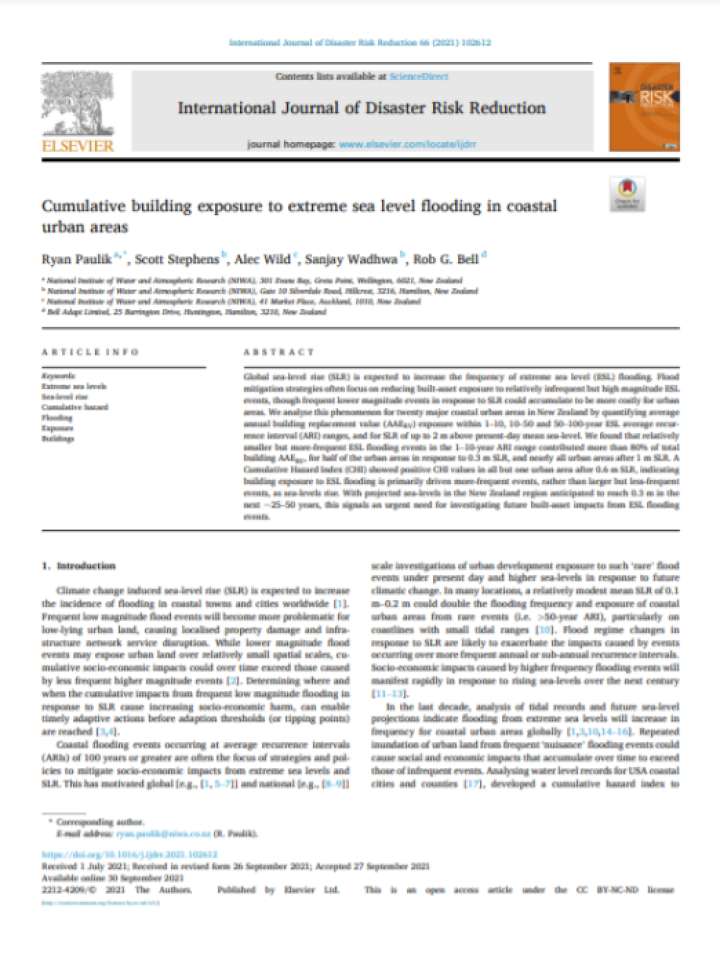Cumulative building exposure to extreme sea level flooding in coastal urban areas
This study analyses the phenomenon of global sea-level rise (SLR) and the expected increase in the frequency of extreme sea level (ESL) flooding. Flood mitigation strategies often focus on reducing built-asset exposure to relatively infrequent but high magnitude ESL events, though frequent lower magnitude events in response to SLR could accumulate to be more costly for urban areas. While lower magnitude flood events may expose urban land over relatively small spatial scales, cumulative socio-economic impacts could over time exceed those caused by less frequent higher magnitude events. Determining where and when the cumulative impacts from frequent low magnitude flooding in response to SLR cause increasing socio-economic harm, can enable timely adaptive actions before adaption thresholds (or tipping points) are reached. The study focuses on twenty major coastal urban areas in New Zealand by quantifying average annual building replacement value (AAERV) exposure within 1–10, 10–50 and 50–100-year ESL average recurrence interval (ARI) ranges, and for SLR of up to 2 m above present-day mean sea-level.
The study finds that relatively smaller but more-frequent ESL flooding events in the 1–10-year ARI range contributed more than 80% of total building AAERV, for half of the urban areas in response to 0.3 m SLR, and nearly all urban areas after 1 m SLR. A Cumulative Hazard Index (CHI) showed positive CHI values in all but one urban area after 0.6 m SLR, indicating building exposure to ESL flooding is primarily driven more-frequent events, rather than larger but less-frequent events, as sea-levels rise. With projected sea-levels in the New Zealand region anticipated to reach 0.3 m in the next ∼25–50 years, this signals an urgent need for investigating future built-asset impacts from ESL flooding events.
Explore further
